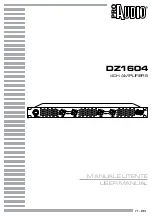
PAGE 4
Wiring and Operation
Input Signal:
Differential Piezoelectric Sensor: Connect the sensor’s positive charge output to the positive
input (IN1+) and the sensor’s negative charge output to negative input (IN2-) using low-noise
cable.
Non-Differential Piezoelectric Sensor: Connect the sensor output to the negative input (IN2-)
and short the positive input (IN1+)
and common (Ⱶ) using low-noise cable. The output signal
will be inverted when operating with a non-differential sensor.
Output Signal:
Voltage Output (mV): The output of the amplifier (V out) should be routed to any readout device
using standard coaxial or two-wire cable. The readout device may be an oscilloscope or other
monitoring device. The output from the amplifier will be an AC signal proportional to the signal
seen by the sensor.
Current Output
(μA): A CVLD power supply that provides a voltage within the specified required
supply voltage of the amplifier should be used for current mode operation. The output of the
CVLD receiver will be a voltage proportional to the V/mA sensitivity of the receiver. A CVLD
receiver is the preferred current mode configuration. Alternatively, a current sense resistor can
be placed in series on the standard coaxial or two-wire cable running from the output of the
amplifier (I out/+24V) t
o the power supply. The resistor must be less than or equal to 250 Ω.
See diagram below of the current mode operation with series resistor. From this resistor, a
voltage output can be routed to any readout device. The voltage output across the resistor is
proportional to the current output per Ohm’s law (V = IR). In this configuration the measured
voltage will be inverted relative to the current output of the amplifier. For both configurations the
readout device may be an oscilloscope or other monitoring device. The output from the
amplifier will be an AC signal proportional to the signal seen by the sensor.
































